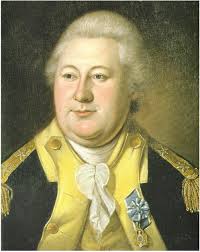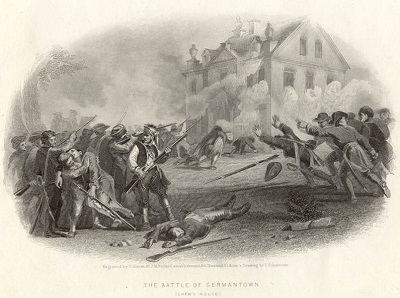The Battle of Germantown
In early October, Washington conceived a bold plan of attack on Howe's 9,000 troop garrison stationed in Germantown. It called for the simultaneous advance of four different units of troops — moving by night. At dawn, the four columns were to converge not far from General Howe's headquarters and catch the British by surprise.
The morning (October 4, 1777) started well for the Americans who had the British retreating. But Washington's plan went astray when one of his four columns lost its bearings in a dense fog and thick smoke. Others columns failed to coordinate effectively.

Henry Knox
Charles Willson Peale, 1783, Portrait Gallery (Second Bank)
The British defense was particularly strong at a Germantown mansion named Cliveden where dozens of soldiers had taken refuge. Valuable time was lost while the Americans under Henry Knox bombarded the house. Those inside did not surrender because they feared that Anthony Wayne's men, still furious over the Paoli Massacre, would kill them anyway.
In the end, bad luck and poor timing forced Washington to retreat to Whitemarsh with the British in pursuit.
The Battle was an American defeat but it served to boost morale and self-confidence. They believed the defeat was the result of bad luck, not poor tactics.
The Americans suffered 152 losses, 521 wounded, and over 400 captured. The British casualties numbered 537 plus 14 captured.




